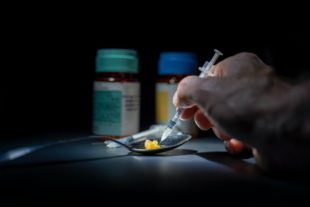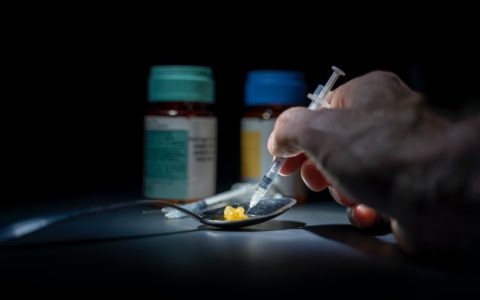Pandemic Substance Abuse Trends: A Christian Perspective
Christian Counselor Spokane
Emilio Marerro of Baptist Health of South Florida (2020) points out that the coronavirus pandemic has affected millions of Americans who have suffered hardships for all too long now. Some have lost their jobs and others are working from home while balancing their children’s virtual education. As the quarantine has progressed, many are missing the normalcy of social gatherings and other activities outside the home. Mental health experts have been warning about many (and growing) psychological effects the pandemic may have on many Americans. The economic stress, coupled with the anxiety and depression brought on by being home alone, could have a lasting impact. Some healthcare professionals are worried these factors may also contribute to an increase in addiction to alcohol and substance abuse. A recent study is pointing to exactly that.
The Recovery Village® recently surveyed past-month drug and alcohol use to better understand how the pandemic is currently affecting substance use in the United States.
Results of The Recovery Village® Survey
The survey asked 1,000 American adults (ages eighteen and older) about their use of drugs and alcohol in the past month. Some questions asked respondents to select each choice that applied, so in a few instances, the total percentage will be greater than one hundred.
The survey respondents most commonly used:
- Alcohol (88%)
- Marijuana (37%)
- Prescription opioids (15%)
- Benzodiazepines, such as Xanax (11%)
- Prescription stimulants, such as Adderall (10%)
- Cocaine (9%)
Additionally, many respondents displayed higher rates of drug and alcohol use. Of the respondents:
- 55% reported an increase in past-month alcohol consumption, with 18% reporting a significant increase
- 36% reported an increase in illicit drug use
In the states hardest hit by the coronavirus (NY, NJ, MA, RI, CT), 67% reported an increase in past-month alcohol consumption, with 25% reporting a significant increase. The participants were asked why they were prompted to use substances within the last month.
Of the respondents:
- 53% were trying to cope with stress
- 39% were trying to relieve boredom
- 32% were trying to cope with mental health symptoms, such as anxiety or depression
(Survey Courtesy: The Recovery Village®)
What the Results Mean
 “Our numbers are increasing–new patients with issues with alcohol use and established patients with a resurgence of their alcohol use,” says Rachel V.F. Rohaidy, M.D., a Baptist Health psychiatrist and medical director at The Recovery Village Miami at Baptist Health, who specializes in the prevention, diagnosis, and treatment of mental, addictive, and emotional disorders.
“Our numbers are increasing–new patients with issues with alcohol use and established patients with a resurgence of their alcohol use,” says Rachel V.F. Rohaidy, M.D., a Baptist Health psychiatrist and medical director at The Recovery Village Miami at Baptist Health, who specializes in the prevention, diagnosis, and treatment of mental, addictive, and emotional disorders.
She added, “I think that technology has played a part in the ease of accessing alcohol as we are now able to have things delivered to us and packaged for us for pickup.”
The results of the survey are concerning. Once people turn to drugs and alcohol, there is concern that it can turn into a substance use disorder, which can sometimes come with co-occurring mental health disorders.
Dr. Rohaidy offers these tips to help reduce the stress brought on by the pandemic:
- Setting limits would be at the top of my list. For example, setting strict time constraints for work or school, and not allowing those activities to blend into family time.
- Limiting exposure to social media and news reporting. If you must watch the news, then set a specific time and only a specific channel. Don’t inundate yourself as it will only add to the stress.
- With the help of free and accessible online webinars – such as ones from events.baptisthealth.net – it is now easy to incorporate exercise, meditation, and healthy living into our daily lives.
- Thirty minutes per day of walking to get the heart rate up slightly is all we need, three to four times a week.
- Staying hydrated can help with appetite and snacking, remembering to maintain healthy family goals.
- Set dinner time every night for the family. Include rules such as no devices or reading materials at the dinner table. Talk about what is worrying everyone. Including children is an important part as they too are likely feeling stressed.
- Start a new hobby or revive an old one. This is a great time for creativity. This will help with stress relief and positive thinking. Having a hobby can help you to feel part of a social group and will help you to feel much less isolated. Knitting, crochet, painting, ceramics, maybe a DIY home renovation project.
There is a pandemic within the pandemic. But what is a Christian perspective?
 God has placed many things in this world for us to enjoy with reckless abandon. Clean air, fresh water, and warm sunshine are all gifts to be enjoyed. There are other things, that we must exercise caution over because if we use them, or use too much of them, they can cause severe damage to our health and well-being.
God has placed many things in this world for us to enjoy with reckless abandon. Clean air, fresh water, and warm sunshine are all gifts to be enjoyed. There are other things, that we must exercise caution over because if we use them, or use too much of them, they can cause severe damage to our health and well-being.
Substances such as alcohol, tobacco, opiates, heroin, prescription drugs, and many others have the potential to make our bodies dependent upon them, even to the point of addiction. It is important to point out that addiction or substance abuse is different from chemical dependence. A person may be chemically dependent on a substance, but they may not be an addict nor abusing it.
If someone is using opioids, for instance, in treating conditions like cancer or chronic pain, they may be dependent on the medication, but they are not addicted to it, nor are they abusing it. While they may suffer withdrawal symptoms if they stop using the substance, they cannot be classified as addicts because they aren’t compulsive users.
On the other hand, substance abuse and addiction can be emotional and/or chemical. When someone uses substances like alcohol, marijuana, cocaine, opiates, tobacco, and others, they may be driven to use them via emotional and other triggers. The pathways and reward centers of the brain are affected, drawing an individual to continue using the substance to obtain a “high” through the release of dopamine and other brain chemicals. When this usage becomes compulsive despite negative consequences, it has become an addiction.
The negative impacts of addiction and substance abuse include breakdowns in relationships, overdoses, a decline in work or school performance, decline in mental and physical health, car and other accidents, and exhaustion of financial resources to obtain more of the substance for consumption.
While chemical dependence is not quite the same as substance abuse or addiction, the DSM-5 (Diagnostic and Statistical Manual of Mental Disorders, 5th Edition) altered earlier editions by discarding the terms “substance abuse” and “chemical dependence” in favor of the catch-all term “substance abuse disorder.” The reason for this change is to be more inclusive of people who may need help but do not think of themselves as addicts.
Causes of Chemical Dependence and Substance Abuse
 Chemical dependence occurs because of our physiology. The interaction of chemical substances with our nervous systems causes reactions such as the increased release of brain chemicals such as dopamine. Continued use of certain drugs such as opioids means that the brain adapts itself to repeated exposure to the substance and begins to function normally only when the substance is present. Some drugs affect the reward pathways of the brain, potentially driving repeated use of the substance to get a high, a major part of addiction.
Chemical dependence occurs because of our physiology. The interaction of chemical substances with our nervous systems causes reactions such as the increased release of brain chemicals such as dopamine. Continued use of certain drugs such as opioids means that the brain adapts itself to repeated exposure to the substance and begins to function normally only when the substance is present. Some drugs affect the reward pathways of the brain, potentially driving repeated use of the substance to get a high, a major part of addiction.
There are a variety of societal, environmental, cultural, and other factors that can cause chemical dependence. Social norms regarding acceptable substance use, as well as laws regulating what can be used and in what amounts, impact how much exposure to certain substances one might have. Other factors such as social pressures, genetic vulnerabilities, psychiatric problems, environmental stressors, and the individual’s personality all have an influence, to varying degrees, on the development of substance abuse or chemical dependence.
Signs of Chemical or Substance Abuse
Signs of chemical dependence or substance abuse disorder (to use the broader term from DSM-5) will vary depending on the substance and if usage has become compulsive or addictive. As noted earlier, chemical dependence is not necessarily the same thing as addiction, but addiction includes a component of chemical dependence.
Some common behaviors that signal chemical dependence, especially of the severe kind that points to addiction include:
- Talking and thinking a lot about using the substance.
- Spending time to get, use and recover from the use of the substance.
- Craving or having a powerful desire to use the substance in question.
- Work or school performance suffers because of ongoing use of the substance.
- Taking risks and using the substance in inappropriate situations, such as driving a car or in sexual situations.
- Negative impacts on friendships, family, or other relationships because of one’s use of the substance.
- Developing a tolerance to the substance and needing to increase amounts of the substance ingested to get an effect.
- Withdrawal symptoms if you decrease or stop taking the substance.
- Giving up activities you used to enjoy.
- Believing you need the substance to have fun or be happy.
- Lying about how much of the substance you are using.
Diagnosing Substance Abuse Disorder
A doctor or qualified mental health professional can diagnose substance abuse disorder. They will take into consideration the substance being used, how long it has been used for and the frequency of such usage.
Other indicators such as your weight, whether you have issues with sleep, depression, or anxiety will be considered in deciding if there is an issue that requires intervention and treatment. Constant fatigue, little concern for hygiene, and unexpected abnormalities in your blood pressure or heart rate may also be indications of substance dependence.
Treatment for Chemical Dependency
Chemical dependence requires treatment, particularly when withdrawal causes physiological problems. However, “treatment” is a broad term and depends on the substance one is dependent on and whether it has altered one’s reward pathways.

For instance, where the person has a severe case of substance abuse disorder and there are deeper physiological impacts from the substance use, longer-term treatment options such as addiction treatment and detoxification will help to retrain the individual’s body and brain to cope without the substance and create opportunities for long-term recovery.
With pain medications that haven’t brought on addiction, a physician can prescribe a detox regimen that will allow them to taper off their medication to reduce the shock to the system and minimize the effects of withdrawal.
Your doctor will thus decide the best course of action based on factors such as:
- The extent of the symptoms
- The type of substance in question
- Your overall health, age, and medical history
- Your expectations
- Your tolerance levels for therapies, medicines, or specific procedures
- Your preferences and opinions
Some treatment options will require an inpatient setup, while others will work on an outpatient basis. As noted earlier, in cases where longer-term treatment is needed, follow-up management and systems of recovery are necessary for successful treatment. These systems may include attending group therapy, ongoing medical supervision, and other psychosocial support systems.
As chemical dependence, particularly when it becomes abuse and addiction can lead to the deterioration of relationships, family therapy may be needed to address problems that may have arisen in the family. Such therapy can also be used to address any underlying issues that may have contributed to the development of chemical dependence as well.
Conclusion
Chemical dependence means that our bodies need certain substances for them to function normally. It is the normal physiological reaction to an addictive substance introduced to the body. It is possible to be dependent on a substance without being addicted to it.
The use of pain medication in the treatment of cancer or other chronic and longer-term conditions, for example, may lead to the development of chemical dependence. This dependence may require the individual to undergo a program of detoxification so that their bodies return to functioning well without the substance.
Addiction, however, is a level and type of chemical dependence that leads a person to compulsively use a substance despite severe negative consequences. This kind of chemical dependence requires intensive and long-term treatment to move them toward recovery.
The good news about chemical dependence is that a pathway to treatment and recovery is available. It may be a long and arduous road to restore body, mind, and relationships in the aftermath of compulsive behaviors brought on by types of chemical dependence, but the journey is not an insurmountable one.
References:Marrero, E. (2020). Survey: Alcohol and drug use increase during COVID-19 pandemic. Available online: https://baptisthealth.net/baptist-health-news/alcohol-and-drug-use-on-the-rise-during-covid-19-pandemic/
Photos:
“Lockdown”, Courtesy of Elena Mozhvilo, Unsplash.com, CC0 License; “Homeless”, Courtesy of Ben Hershey, Unsplash.com, CC0 License; “Syringe”, Courtesy of Michael Longmire, Unsplash.com, CC0 License; “Family Stroll”, Courtesy of Jessica Rockowitz, Unsplash.com, CC0 License





